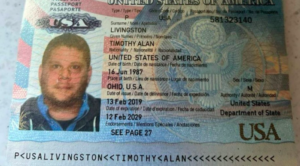Sharon Quirk-Silva, Voice of OC
05 de agosto de 2022

Bathrooms are essential to the daily lives of everyone on the planet. Moreover, as California transitions from pandemic restrictions to “learning to live with Covid,” the ability to access public restrooms and provide opportunities for proper handwashing & hygiene experiences will be a critical part of the State’s public health response. The 2022 Orange County Point in Time count, the first since the pandemic disrupted plans for the last homeless census, found 5,718 people experiencing homelessness within the County. That large number springs Mahatma Gandhi’s quote to my mind, “The true measure of any society can be found in how it treats its most vulnerable members.” Regardless of political party identification, governmental infrastructure needs to be more responsive to the problems of today before they become compounded obstacles for future generations to inherit in the coming years.
Government entities across the country operate and maintain public restrooms; however, information about the availability and accessibility of public restrooms is rarely published. For example, the city of Chicago does not provide the public an online map of public restrooms nor their operating hours, so The Chicago Tribune newspaper created one. In California, San Diego State University started in 2020 their Project For Sanitation Justice which released a report in March concerning public restrooms in San Diego County. Recent actions by private sector businesses to limit access to their restroom facilities set an unfortunate precedent that does nothing to address the issue at hand – the lack of public restrooms in our state. Additionally, many historically marginalized communities still face discrimination in accessing bathrooms in public accommodations on private property.
University of Maryland Law Professor, Taunya Lovell Banks writes in their 2020 Seton Hall Law Review article, The Disappearing Public Toilet , “But it is hard to develop effective policies if you have no idea about the availability of public toilets. Thus, at the very least, state and local governments need to mandate periodic toilet surveys and express a commitment to improving access to public toilets for all.” To that end, I have introduced legislation that could begin the process of providing better access to restroom facility locations through sensible action. AB 1883 would require the California Department of Health Services to assemble and publish a database of all public restrooms in California. This will ensure that people who must access bathrooms more frequently than the general population, such as seniors, pregnant women, children, and people with particular disabilities may readily do so. In addition, this policy will provide unhoused individuals with the information necessary to allow them to relieve themselves with dignity and help alleviate some of the pressure that private sector businesses have faced over the years to provide our communities with basic sanitation infrastructure necessary to ensure the public’s health.
The bill is a critical first step by the state, supported by empirical data, in ensuring equitable access to public restrooms for all. For the sake of our communities, let us hope that AB 1883 is passed by the legislature and signed by Governor Newsom. It is the decent, and right, thing to do for the people of California.
Sharon Quirk-Silva, California Assembly Member, 65th District
Opinions expressed in community opinion pieces belong to the authors and not Voice of OC.
“El presente artículo es propiedad de Voice of OC”
Quirk-Silva, S. (2022). Quirk-Silva: The Critical Need to Increase Public Restrooms Access in California. Voice of OC. Recuperado el 11 de agosto de 2022, de https://voiceofoc.org/2022/08/quirk-silva-the-critical-need-to-increase-public-restrooms-access-in-california/







